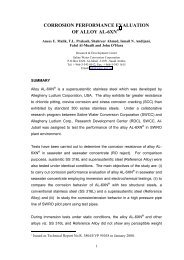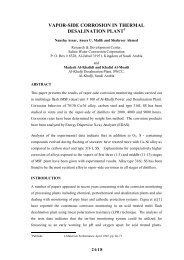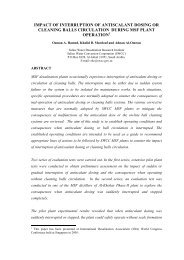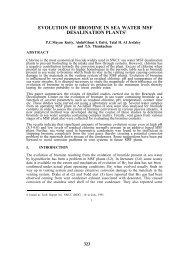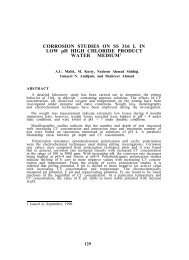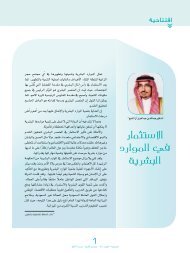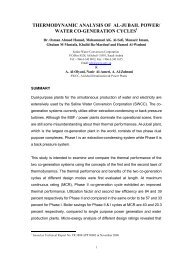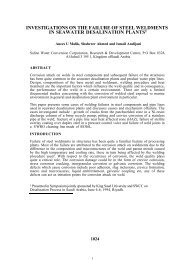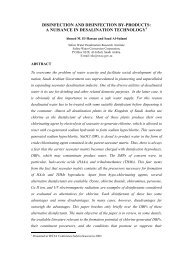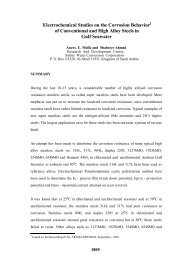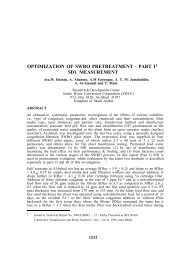CORROSION MONITORING OF SWCC PLANTS - I:1 Vapor-Side ...
CORROSION MONITORING OF SWCC PLANTS - I:1 Vapor-Side ...
CORROSION MONITORING OF SWCC PLANTS - I:1 Vapor-Side ...
You also want an ePaper? Increase the reach of your titles
YUMPU automatically turns print PDFs into web optimized ePapers that Google loves.
corrosion products. Corrosion coupons can be mounted in different configurations to<br />
study different types of corrosion mechanisms, such as crevice corrosion, galvanic<br />
attack and stress corrosion. Coupons, which are the test specimens of the material of<br />
interest, are carefully cleaned, weighed and measured before being assembled on the<br />
corrosion test retractable probes. During assembly, two coupons are arranged so that<br />
they are electrically insulated from the probe material so as to avoid galvanic attack.<br />
After a prescribed period of exposure, the corrosion probe is disassembled and the<br />
corroded coupons are chemically cleaned, weighed and corrosion rate is determined.<br />
The corrosion rate is calculated from the weight loss, time of exposure and original<br />
exposed surface area of the material by the following formula [Fontana, 1987].<br />
where :<br />
MPY =<br />
Mils Per Year<br />
W = Weight loss, mg<br />
A = Area of specimen, in 2<br />
MPY = 534 W<br />
AtD<br />
t = Exposure time, hr<br />
D = Density of specimen, g/cm 3<br />
In brine immersion zone, the coupon test method could be used successfully by using<br />
large surface area coupons. The most serious problem encountered in immersion zone<br />
is the high probability of scale formation. The scales can be adherent to metal which<br />
give an extra protection to the metal or could be non-adherent which could lead to<br />
initiate under-deposit corrosion. The difficult problem in calculation of corrosion rate<br />
of immersed coupon is the determination of actual surface area due to the scale<br />
formation and time parameters of this process.<br />
During coupon testing, the coupon could be mounted inside the flash chamber at<br />
different locations with different angles. The coupon should be insulated from flash<br />
chamber materials, fastener and holder materials by using any non-conductive material.<br />
3.3 Methodology<br />
1626



